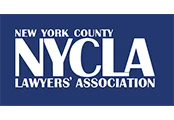New York has both criminal and non-criminal offenses, each with two main categories, which are then divided into even further classifications. Like other states, New York categorizes criminal offenses into misdemeanors and felonies. Of course, how these charges are classified varies from state to state. It’s crucial to understand the types of criminal cases in New York, particularly if you are facing criminal charges.
Any form of criminal charge can severely impact your life, but some have more significant consequences than others.

Non-Criminal Offenses in New York
Violations and infractions are both considered offenses but not crimes. Infractions are minor traffic violations, such as unlawful parking or speeding that are not considered reckless driving. Violations cover other offenses that are not infractions but are not criminal offenses. Although violations are not criminal offenses, they still carry the potential for 15 days in jail, community service, and fines.
The main difference between infractions or violations and criminal offenses is the lack of a resulting criminal record. You only get a criminal record from a criminal offense, and those records can affect significant opportunities in your future.
Misdemeanors in New York
Criminal penalties that are classified as misdemeanors are considered lesser crimes. There are three classes of misdemeanors, including Class A, Class B, and unclassified misdemeanors. The highest criminal penalty for a misdemeanor is up to one year in jail and up to $1,000 in fines for most cases.
Felonies in New York
A felony is the most serious form of criminal charge. These crimes are those with a sentence of a year or more in prison, although a lesser sentence or alternate sentence may be allowed. Felonies also result in significant fines.
There are five classes of felonies, from Class A to Class E. Class E felonies are charges with up to 4 years in prison, while Class A felonies could result in life in prison. Felonies can also be considered violent or nonviolent, depending on what is outlined in each specific statute. Violent felonies are likely to have a fixed sentence.
Types of Criminal Cases
If you are being charged with a criminal offense, it is essential that you understand the different criminal cases commonly handled in New York. These include:
- -Theft: Petty larceny is a Class A misdemeanor, while grand larceny or aggravating factors during the commission of a crime result in more serious charges.
- –Drug Offenses: Very few drug charges are misdemeanors, such as seventh-degree possession of any substance or fifth-degree possession of marijuana. Sale of a controlled substance, and most controlled substance possession charges are felonies in New York.
- -Driving While Intoxicated (DWI): A first-offense DWI is charged as an unclassified misdemeanor if there are no aggravating factors. Repeat offenses are likely to have more serious felony charges.
- -Property Crimes: Arson is a form of property crime, and first-degree arson is a Class A felony.
- -Violent Crimes: These include assault, battery, weapons offenses, and other serious crimes. Third-degree assault is charged as a Class A misdemeanor. Charges like murder, assault, robbery, and manslaughter are different levels of felonies.
- -White-Collar Crimes: These are financial crimes like fraud and money laundering. Aggravated identity theft is a Class D felony.
- -Sex Crimes: These include prostitution, which is a Class B misdemeanor; forcible touching and sexual misconduct, which are Class A misdemeanors; fourth-degree aggravated sexual abuse, which is a Class E felony; and sex trafficking, which is a Class B felony.
- -Domestic Violence: These crimes are typically violent crimes or sex crimes, and they are considered domestic violence crimes when they are committed against a member of the household, a romantic or sexual partner, or a family member by blood or marriage. Reckless assault of a child and second-degree stalking are Class D felonies. Child abandonment is a Class E felony.
FAQs
Q: What Are the Different Levels of Criminal Offenses in New York State?
A: Criminal offenses include misdemeanors, which range from probation to time in jail. This category further includes three types, from least to most serious:
- -Undefined misdemeanor
- -Class B misdemeanor
- -Class A misdemeanor
Criminal offenses also include felonies, which have five classifications in New York:
- -Class E felony
- -Class D felony
- -Class C felony
- -Class B felony
- -Class A felony
Felonies are further classified into violent and nonviolent felonies. A Class A felony is the most serious state crime, and it can be punished with up to life in prison.
Q: What Are the Three Most Common Types of Criminal Cases?
A: Criminal cases in New York include felonies, misdemeanors, and non-criminal offenses, like violations. Criminal cases can also be categorized into property crime and violent crime. According to the FBI (Federal Bureau of Investigation), in 2019, the three most reported crimes in the state of New York were:
- Larceny-theft, with a state total of 226,851 offenses or 1,166.1 per 100,000 residents
- Aggravated assault, with 44,555 offenses or 229 per 100,000
- Burglary, with a total of 27,600 offenses or 141.9 per 100,000
Q: What Are Three Examples of Criminal Law Cases?
A: There are many criminal law cases, including:
- Driving While Intoxicated (DWI): Operating a motor vehicle while under the influence of any substance is illegal.
- Petit or Grand Larceny: Larceny is the crime of theft, or wrongfully taking, holding, or obtaining property. Petit larceny typically is the theft of items valued at $1,000 or less, while grand larceny includes the theft of items worth more than $1,000, up to and over $1 million. Grand larceny also includes the theft of specific property.
- Assault: Assault charges range from a misdemeanor to a felony, and this crime occurs when someone intends to cause harm to another person or causes harm due to criminal negligence.
Q: What Is the Difference Between a Misdemeanor and a Felony in New York?
A: A criminal offense in New York is classified as a misdemeanor or a felony based on the maximum sentence length. Misdemeanors are considered to be less severe crimes, and they typically result in one year in county jail or less and up to $1,000 in fines. Felonies are more serious crimes that have sentences of at least one year in state prison. The most serious felonies can result in up to life in prison. Both misdemeanors and felonies result in a criminal record.
Finding Your Criminal Defense Attorney
Navigating the criminal justice system can be overwhelming and terrifying. At the Law Offices of Robert Tsigler, PLLC, we can help. Our team understands the systems and the charges that you may face. Contact our firm today.


















